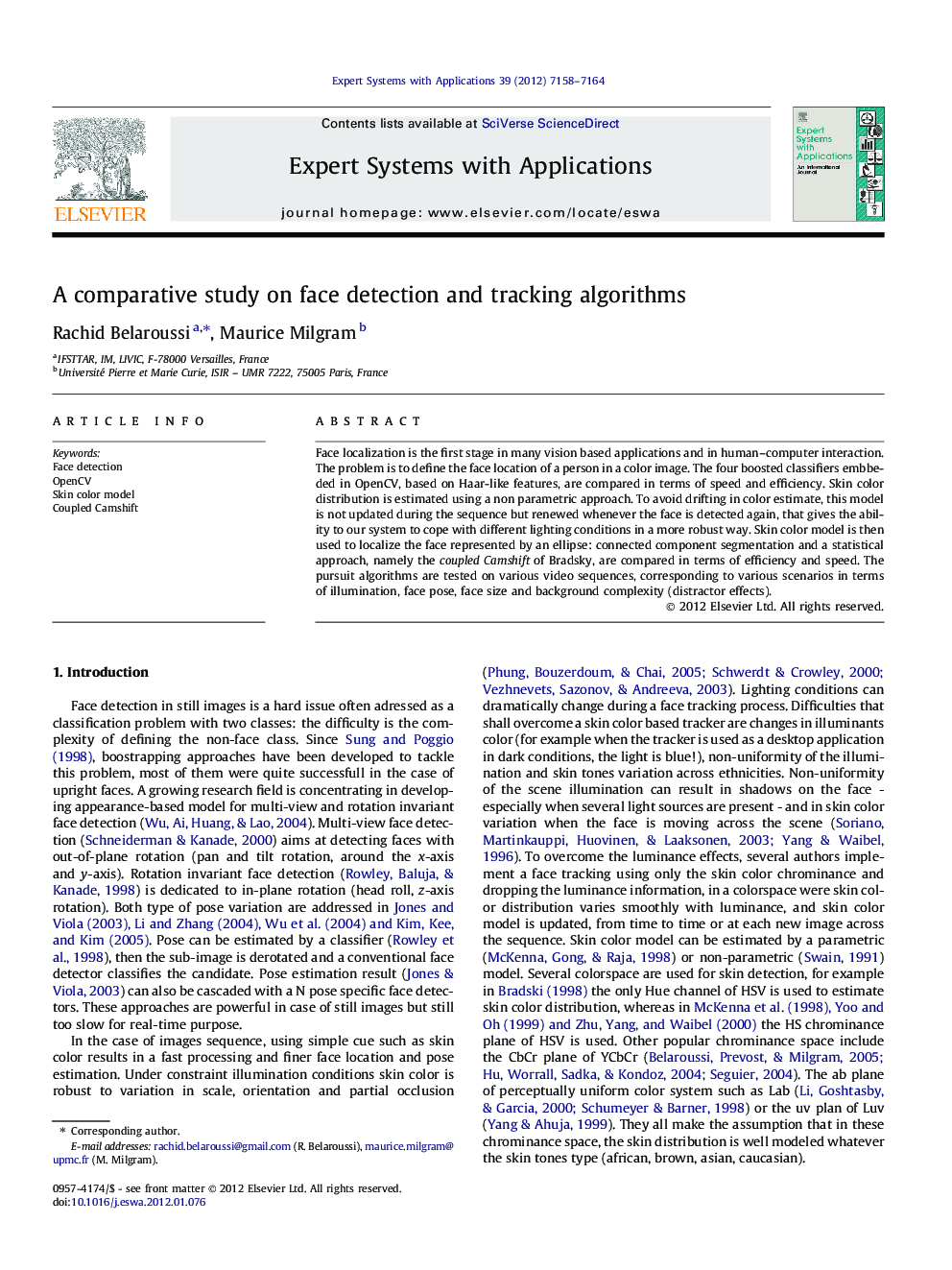| Article ID | Journal | Published Year | Pages | File Type |
|---|---|---|---|---|
| 384397 | Expert Systems with Applications | 2012 | 7 Pages |
Face localization is the first stage in many vision based applications and in human–computer interaction. The problem is to define the face location of a person in a color image. The four boosted classifiers embbeded in OpenCV, based on Haar-like features, are compared in terms of speed and efficiency. Skin color distribution is estimated using a non parametric approach. To avoid drifting in color estimate, this model is not updated during the sequence but renewed whenever the face is detected again, that gives the ability to our system to cope with different lighting conditions in a more robust way. Skin color model is then used to localize the face represented by an ellipse: connected component segmentation and a statistical approach, namely the coupled Camshift of Bradsky, are compared in terms of efficiency and speed. The pursuit algorithms are tested on various video sequences, corresponding to various scenarios in terms of illumination, face pose, face size and background complexity (distractor effects).
► The four boosted classifiers available in OpenCV are compared (time and detection rate). ► Reducing image size reduces the computation time but lowers the detection rate. ► Minimal face size and detection accuracy depend on detector setup and image processing. ► Blob detection and Camshift tracking are compared on different illumination conditions.
